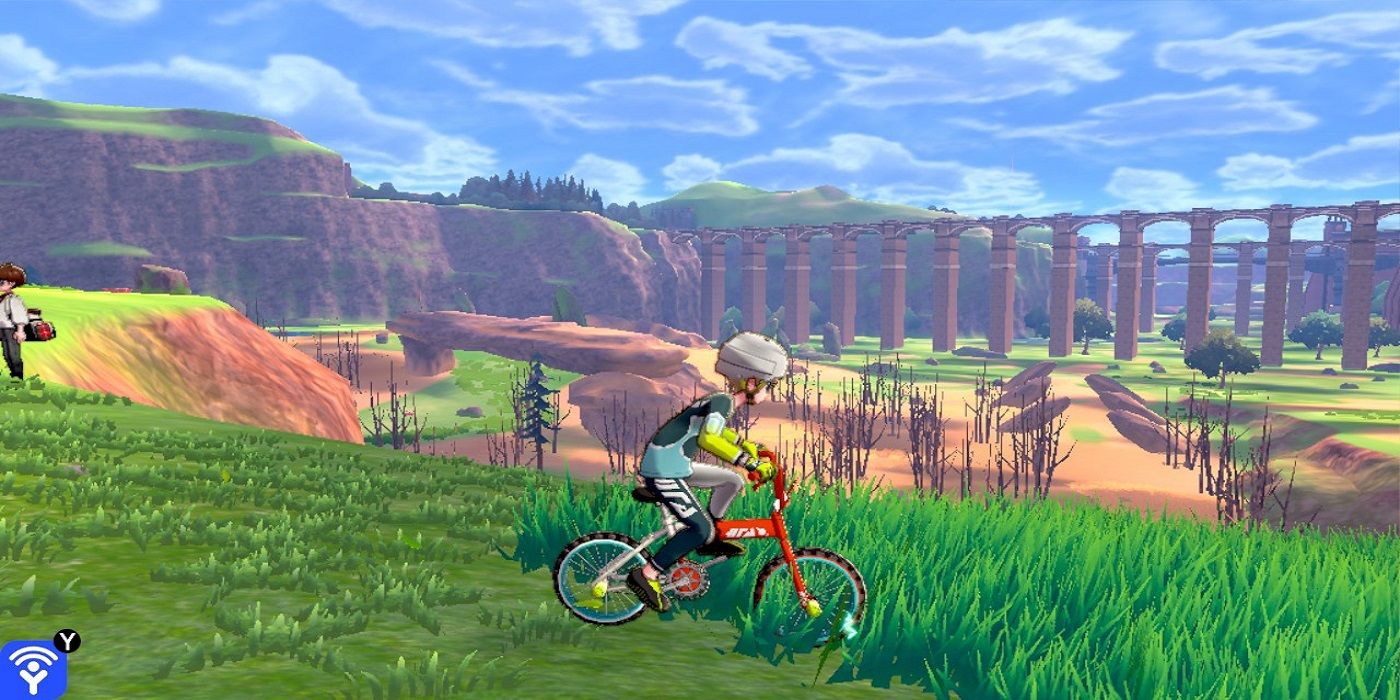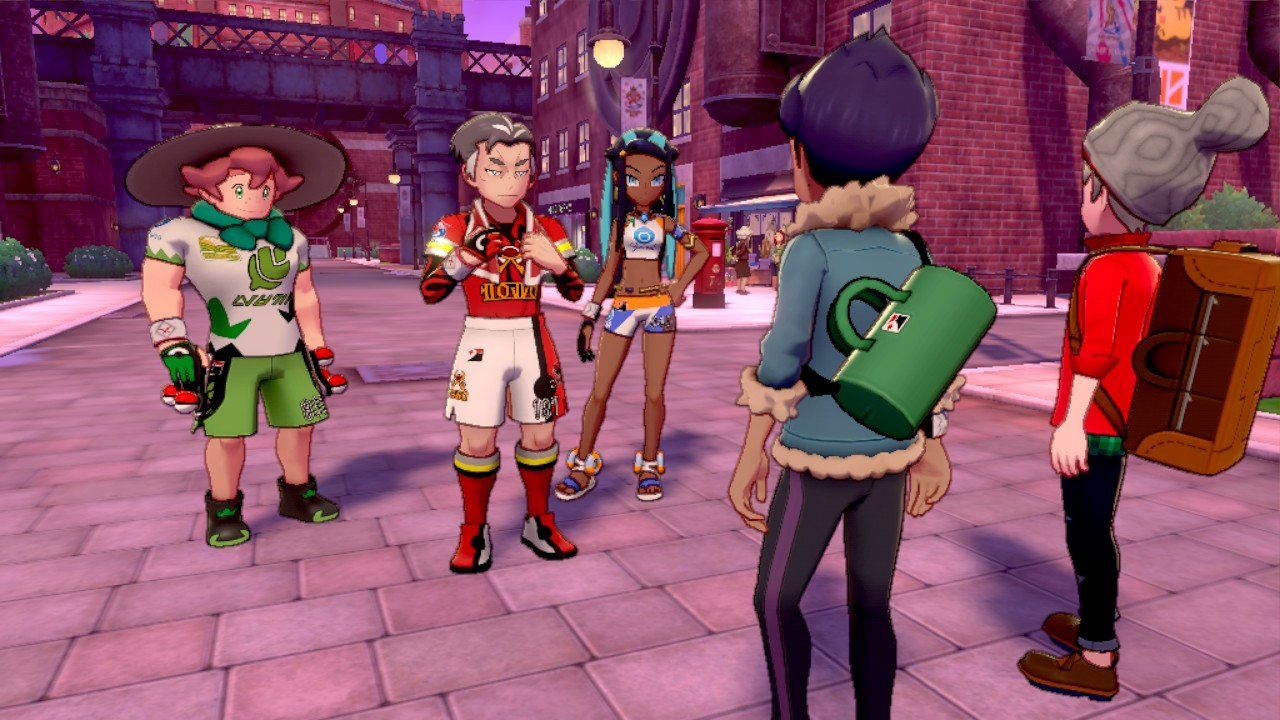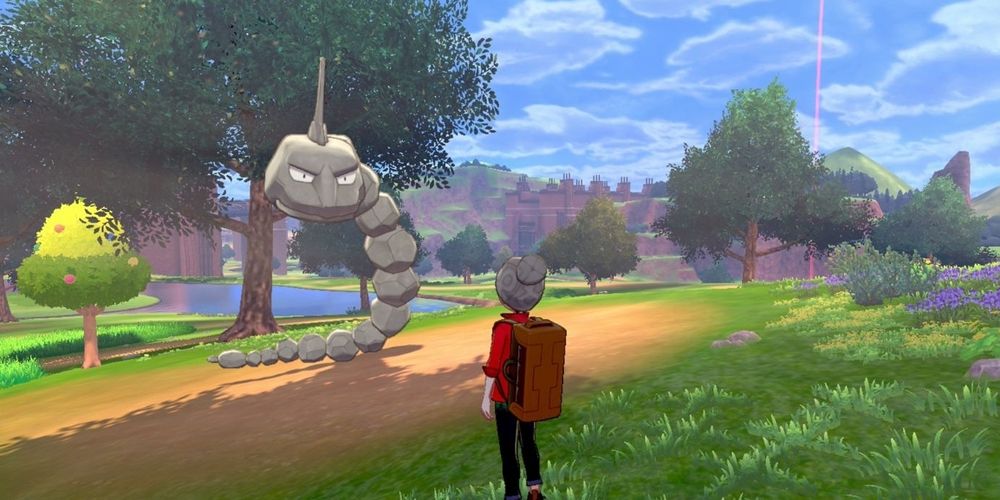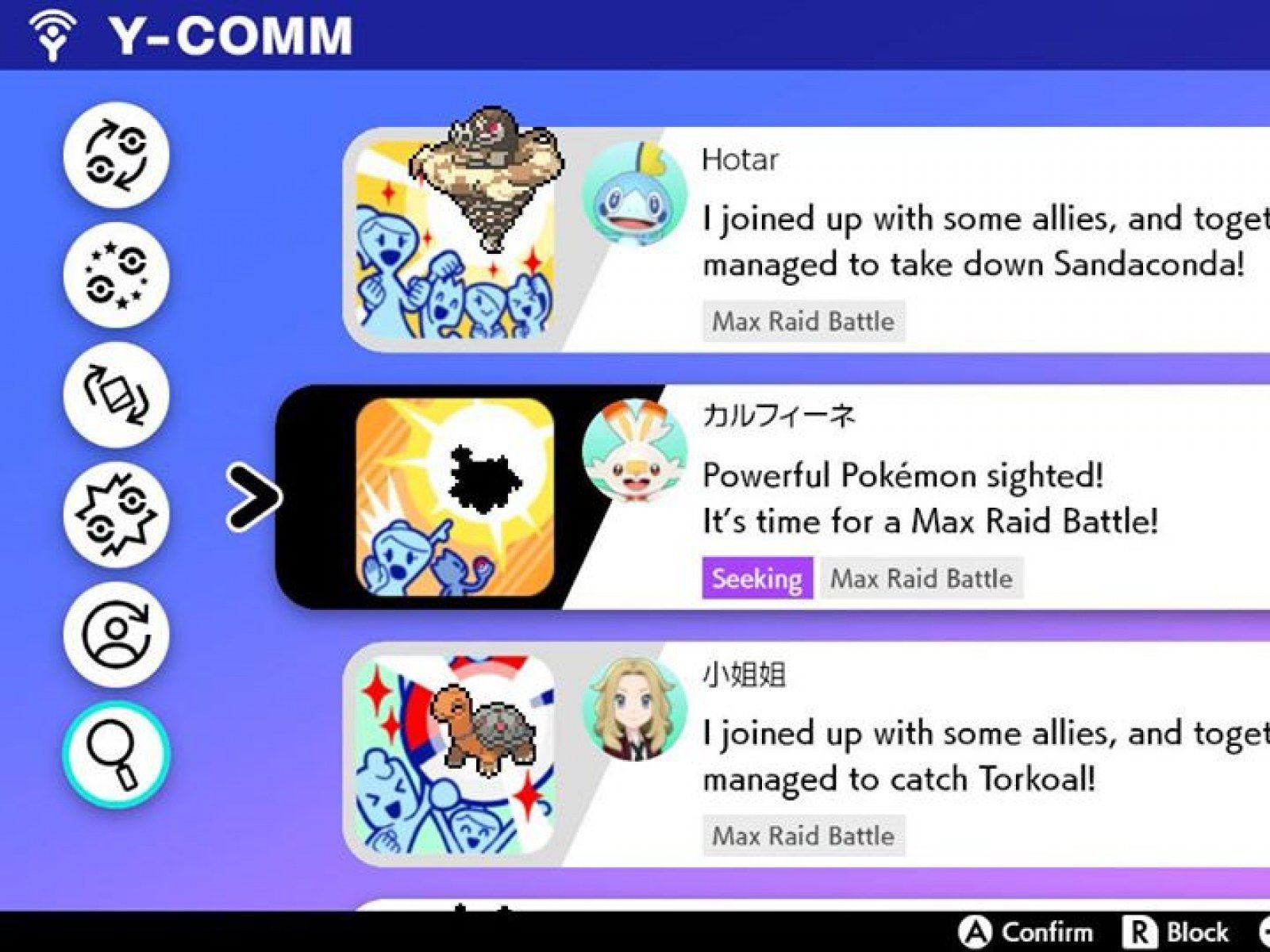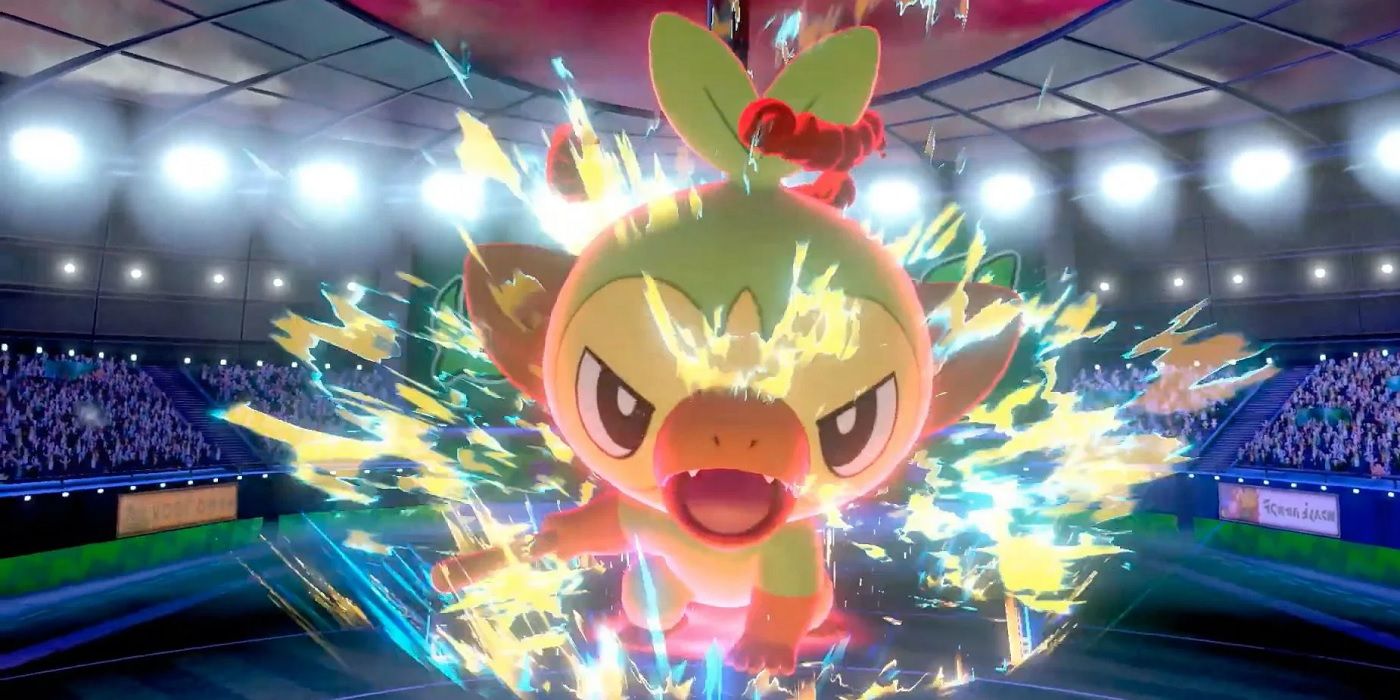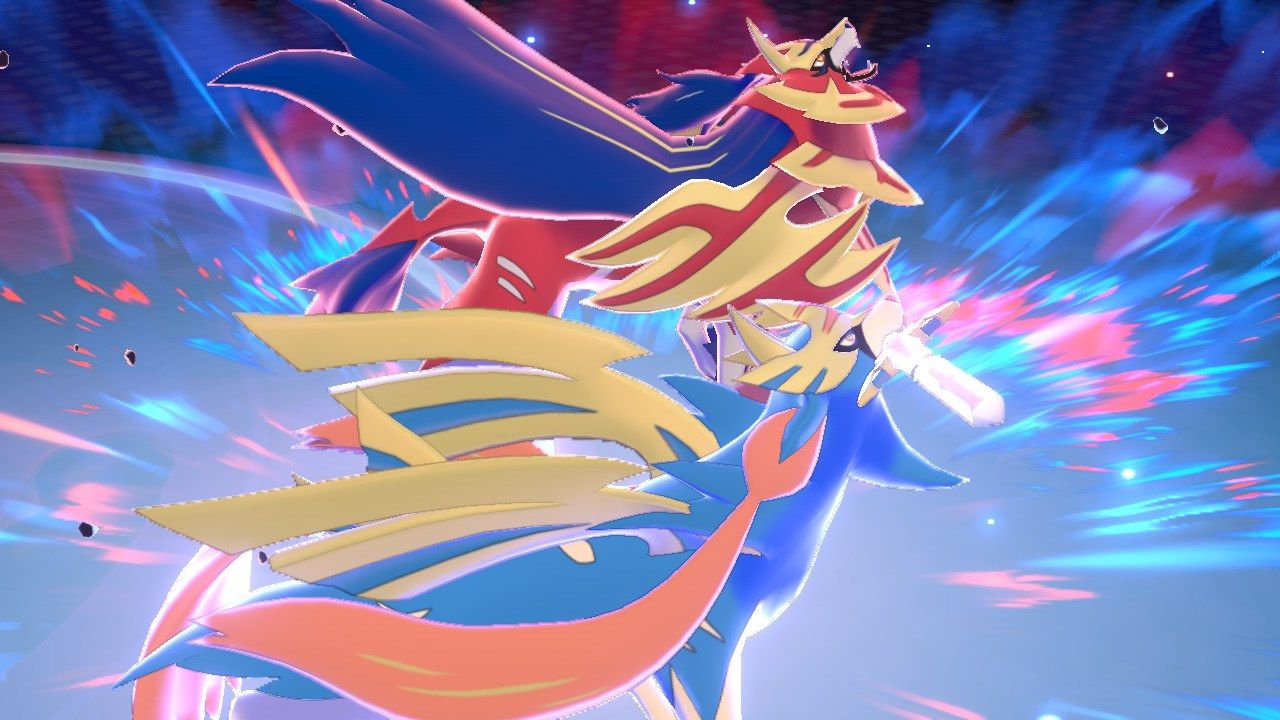Every installment of the Pokemon franchise adds new features, strips others away, and ultimately changes parts of the Pokemon formula (for better or worse). With Pokemon Sword and Shield, Game Freak continues to tweak the beloved franchise with a myriad of new and altered features. Some land with resounding success, while others are nothing compared to previous iterations of similar features. Here is how Pokemon Sword and Pokemon Shield has changed the core gameplay of the Pokemon franchise.
The Gym Challenge
There are two key parts of the Pokemon franchise that every fan focuses on: the gym challenge and the PokeDex. Most Pokemon games feature the standard challenge of eight gym leaders before facing an Elite Four and the Champion. Pokemon Sun and Moon was perhaps the most different in this regard due to the nature of the Island Challenge, but the concept is still there. In Sword and Shield,there are plenty of unique and personable gym leaders, including some that are exclusive to Sword or Shield. The gym leader types are pretty standard for a Pokemon game, though it is the first game to feature a Dark-type gym.
What is perhaps most striking about Sword and Shield's Gym Challenge is that instead of an Elite Four, players will face off in a tournament against the gym leaders again, though each features a new, more powerful Pokemon - though the gym leader's favorite Pokemon will remain on-board. Fans seem mixed about this change. On one hand, it's great seeing the Gym Leaders battle at a high level, but without an Elite Four there is no "best of the best" trainers outside of the Champion. With the diverse and beautiful Galar region, there should definitely be some trainers who stand above everyone else. With the introduction of the Gym Leader tournament, it implies that they held back during the initial Gym Challenge which is a bit disappointing.
Catching Pokemon and The Pokedex Problem
Pokemon Sword and Shield has a lot of controversy surrounding its development and release, and the issue that started it all was the #Dexit movement. Sword and Shield feature approximately 400 Pokemon, while over 400 Pokemon from previous generations are missing. While having 400 native Pokemon to Galar is a good amount, many fans are disappointed that when Pokemon Home launches, they will not be able to transfer over a large number of Pokemon from previous games. In terms of gameplay, Galar does feel diverse and unique in its array of Pokemon, and there doesn't feel like a shortage of Pokemon when looking at it independently - but there is an issue when it comes to filling out the Pokedex.
Sword and Shield added many new Pokemon this generation, but the problem is that players can catch almost every Pokemon either in a route or in the Wild Area. The Machamp that used to be trade-evolution only? It can be caught in the Wild Area. Did someone spend the whole game leveling up a Rookadee to get Corviknight? Well, they can just catch tons of Corviknight in the Wild Area. It takes a lot away from the atypical aspects of certain Pokemon, making them seem less distinct.
Sword and Shield feature many Pokemon that have completely original and unique evolution mechanics, but because many of those Pokemon can be caught in the wild, some players will never work to uncover the mechanics themselves. While the series motto is "gotta catch 'em all," Sword and Shield perhaps take that too seriously, which means there is little incentive to actually raise a Pokemon from the start of the game when they can be caught in their final evolution later on.
Social Features
With the introduction of the Wild Area and its always-online mechanics, players are more connected than ever in Sword and Shield. The new Y-Comm system lets players search for specific activities (like raid battles or link trades) with relative ease. Players can set link codes using four digit pin numbers to create private lobbies if they want to connect to specific people. However, the Y-Comm system is a far from perfect system. Many previous generations of Pokemon features similar networking options that were better implemented.
The lack of a Global Trade System means players cannot search for specific Pokemon they want, and must rely on third party forums to find proper trade partners. Matchmaking for Raid Battles in the newly introduced Wild Area is also spotty, and sometimes players will be forced to fight boss Pokemon with AI-controlled partners to mixed results. Overall, Y-Comm definitely needs some work if Game Freak wants to make Sword and Shield the interconnected Pokemon world that it could be.
Dynamax and Gigantamax Battles
Every generation of Pokemon has a gimmick that tries to shake up the Pokemon battle formula, and in Sword and Shield, it is Dynamaxing. If in an appropriate battle that allows it, players can Dynamax their Pokemon, turning them into giant versions of themselves with special Dynamax moves. Players can also team up with 3 other players online to take on a Dynamax Pokemon in the Wild Area in Raid Battles. While the gimmick of Dynamaxing Pokemon is a cool novelty, it is just that: a novelty. It doesn't change the game in any major way, and with the lack of Mega Evolutions that were a fan-favorite feature, many fans are left disappointed in the lack of variety and options when it comes to the competitive scene.
Difficulty and The Endgame
Pokemon has been hit-or-miss when it comes to endgame content. Past titles like Pokemon Emerald featured fully fleshed-out battle frontiers that held powerful trainers and unique challenges. Pokemon Black/White 2 opened up new areas of the map for players to explore and new Pokemon to catch. However, recent generations start featuring less and less endgame content. With Sword and Shield, there is a postgame episode which will last approximately an hour (if players are properly leveled up), where players can finally catch Zacian and Zamazenta. Outside of that, there is a new Battle Tower and then Wild Area Raids. In terms of comparing it to previous generations, it's pretty on-par for recent titles, but still far less than older generations had.
Another trend that has grown over the course of the Pokemon franchise is the low difficulty for most content. While Pokemon has always had avenues to make the game easier, titles lately have made the difficulty curve of most content a bit less severe. In Sword and Shield, players have started finding new ways to impose challenges - like one player who completed a crazy challenge run using one Pokemon. The fact that the Exp Share cannot be turned off in Sword and Shield means that unless players put Pokemon in boxes, then all their Pokemon are constantly leveling up, thus reducing the amount time needed to train a good team.
Overall, Sword and Shield ends up being on-par with recent Pokemon titles in many ways, though some features introduced this generation do help the title a bit. The Wild Area is a great start to what could be a new staple of the Pokemon franchise, and the new Pokemon introduced in this generation feel really unique and interesting. Even more so, the new evolution mechanics, like turning Farfetch'd into Sirfetch'd, are some of the most unique mechanics in the whole Pokemon series. However, Sword and Shield is held back by its lack of variety in battle mechanics and limiting social features. Hopefully, Game Freak will take the positive changes from this generation and implement them again as the series moves forward.
Pokemon Sword and Shield are available now exclusively for Nintendo Switch.

